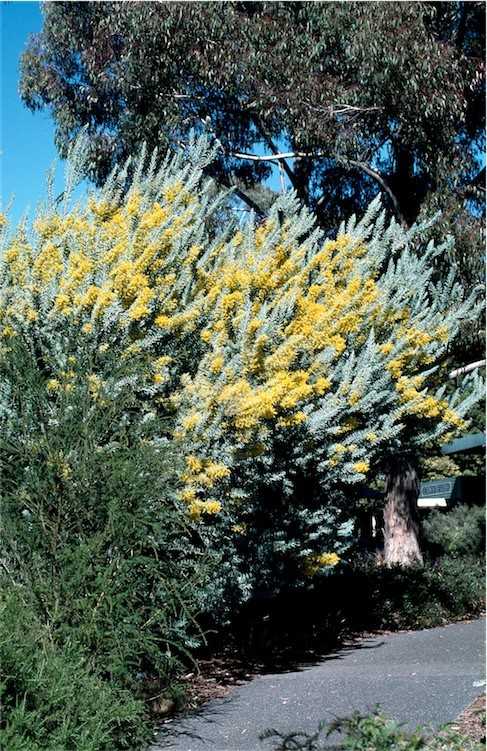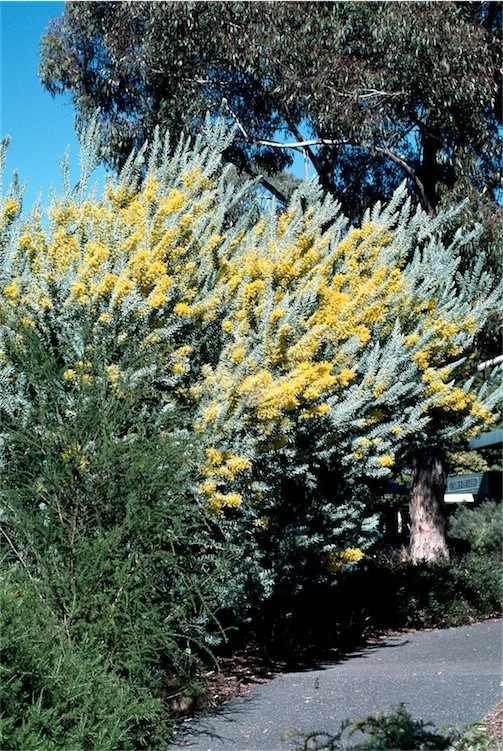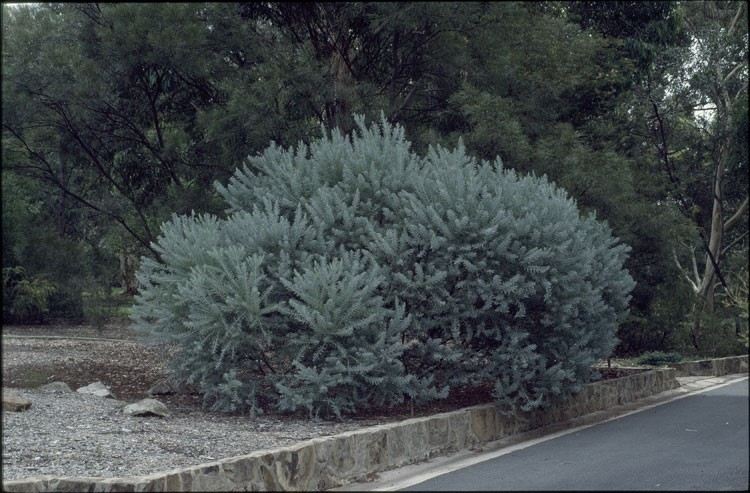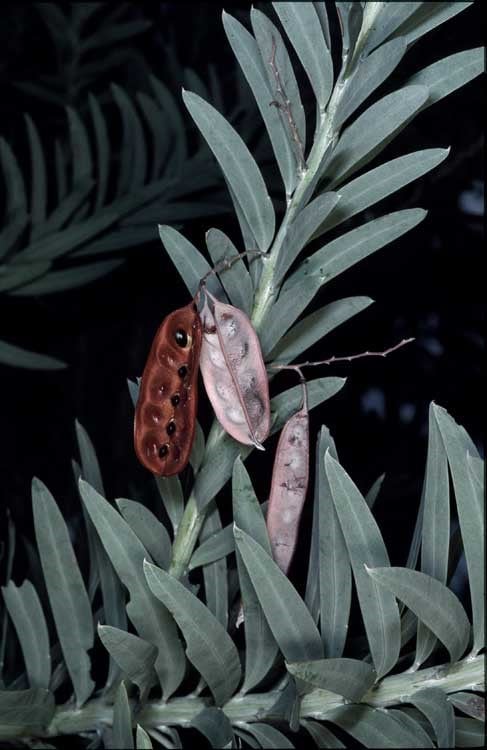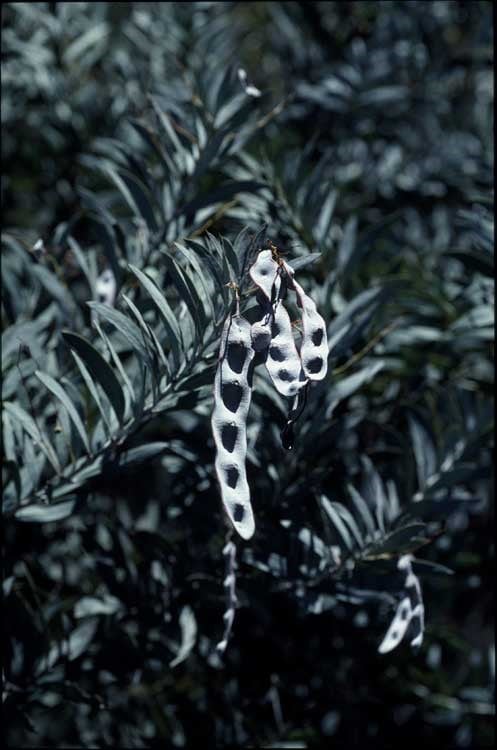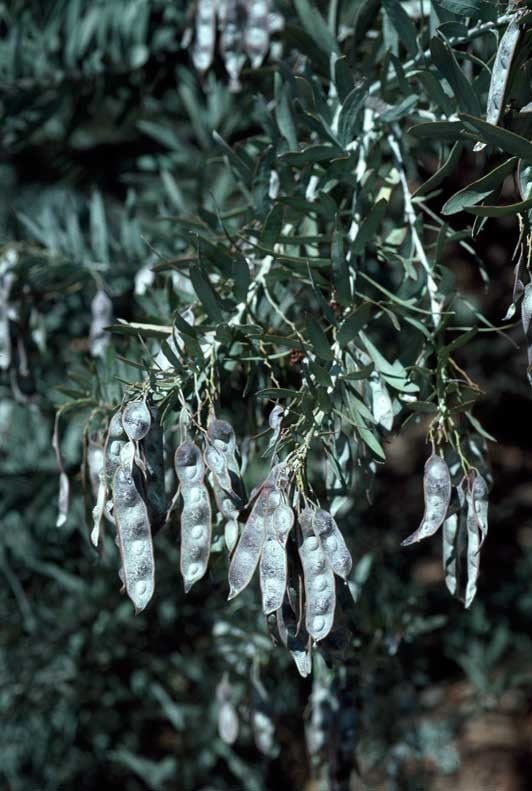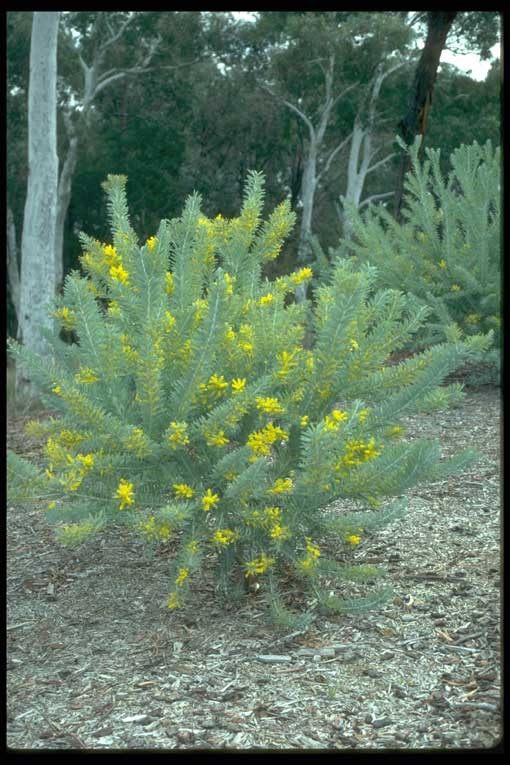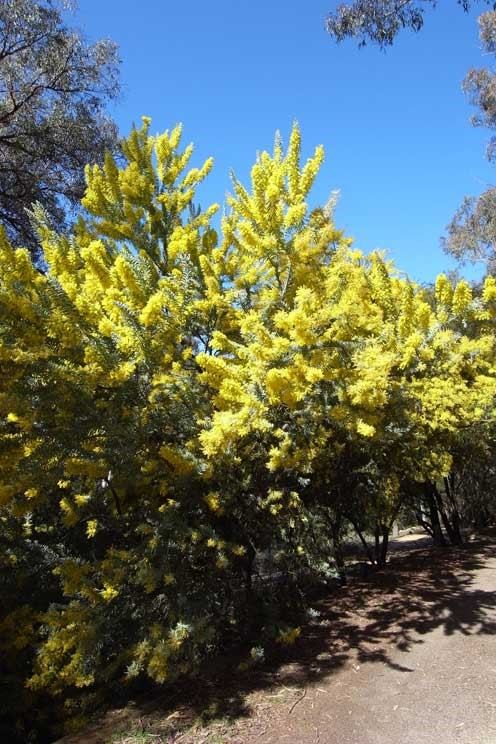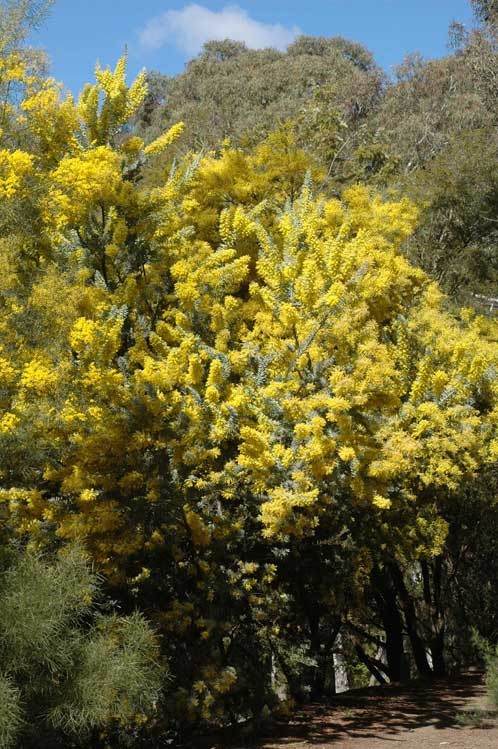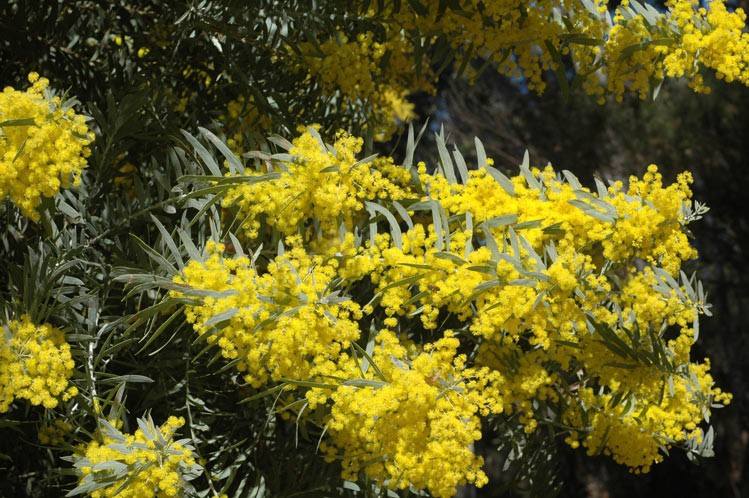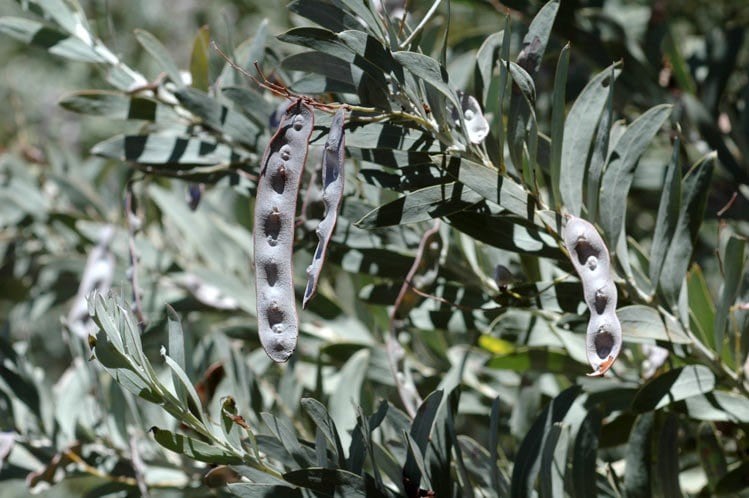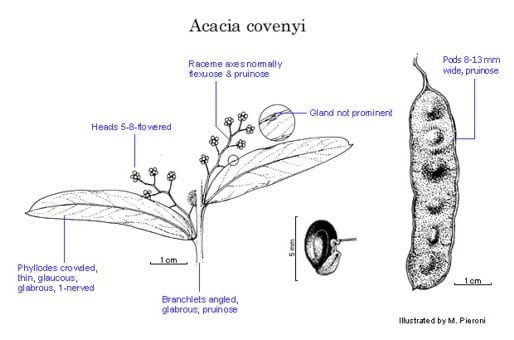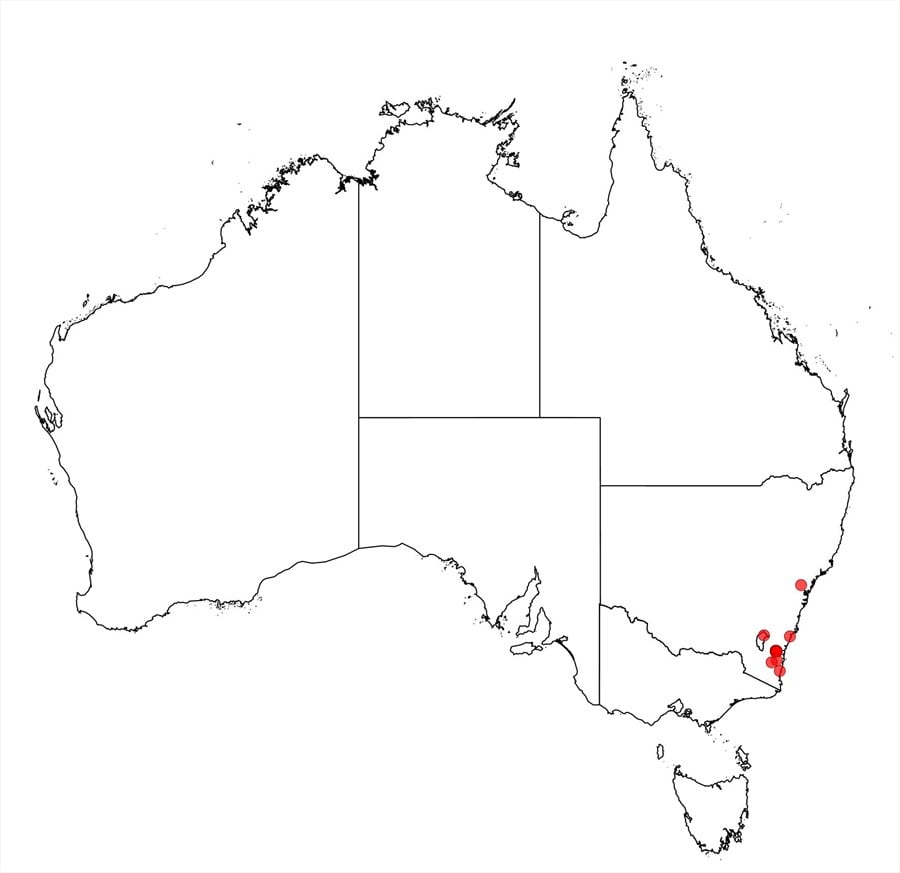Acacia covenyi Tindale
WATTLE
Acacias of Australia
Common Name
Blue Bush
Family
Fabaceae
Distribution
Restricted in N.S.W. to the eastern hills of the Great Divide from the Deua R. to near Kybeyan.
Description
Glabrous shrub or tree 1.5–7.5 m high. Branchlets acutely angled at extremities, pruinose. Phyllodes on raised stem-projections, crowded, slightly inequilateral, narrowly oblong-elliptic, (2–) 3.5–5.5 cm long, 5–11 mm wide, mucronate, thin, glaucous, 1-nerved per face, obscurely penninerved; gland not prominent, 5–25 mm above pulvinus, commonly connected to midrib or pulvinus by fine oblique nerve(s). Inflorescences racemose; raceme axes 3–6 cm long, slender, normally pruinose and flexuose; peduncles 2–5 mm long, slender; heads globular, normally 5–8-flowered, bright yellow; bracteoles sessile, widely ovate, pruinose. Flowers 5-merous; sepals 2/3–5/6-united. Pods narrowly oblong, to 8 cm long, 8–13 mm wide, firmly chartaceous to thinly coriaceous, pruinose. Seeds longitudinal, ovate, 4–4.5 mm long, somewhat shiny, black; funicle straight and appressed to inner surface of pod for 4 mm; aril clavate.
Habitat
Grows in thickets, mainly on limestone slopes and ridges but also sometimes on quartzite.
Specimens
N.S.W.: Bendethera Caves, 32 km W of Moruya, E.F.Constable 6857 (NSW); E of Kybeyan near Cooma, early Aug. 1977, G.Neville s.n. (NSW).
Notes
Gland morphology is important in distinguishing A. covenyi from related species such as A. prominens, A. barringtonensis, etc., fide M.D.Tindale, Telopea 1: 436, pl. 20 (1980). Acacia barringtonensis is further distinguished by its hairy branchlets, phyllodes, raceme axes, peduncles and ovary.
The distinctive bracteoles are similar to those found in A. dawsonii (sect. Plurinerves).
FOA Reference
Data derived from Flora of Australia Volumes 11A (2001), 11B (2001) and 12 (1998), products of ABRS, ©Commonwealth of Australia
Author
B.R.Maslin
Minor edits by B.R.Maslin
This identification key and fact sheets are available as a mobile application:
URL: https://apps.lucidcentral.org/wattle/
© Copyright 2018. All rights reserved.
